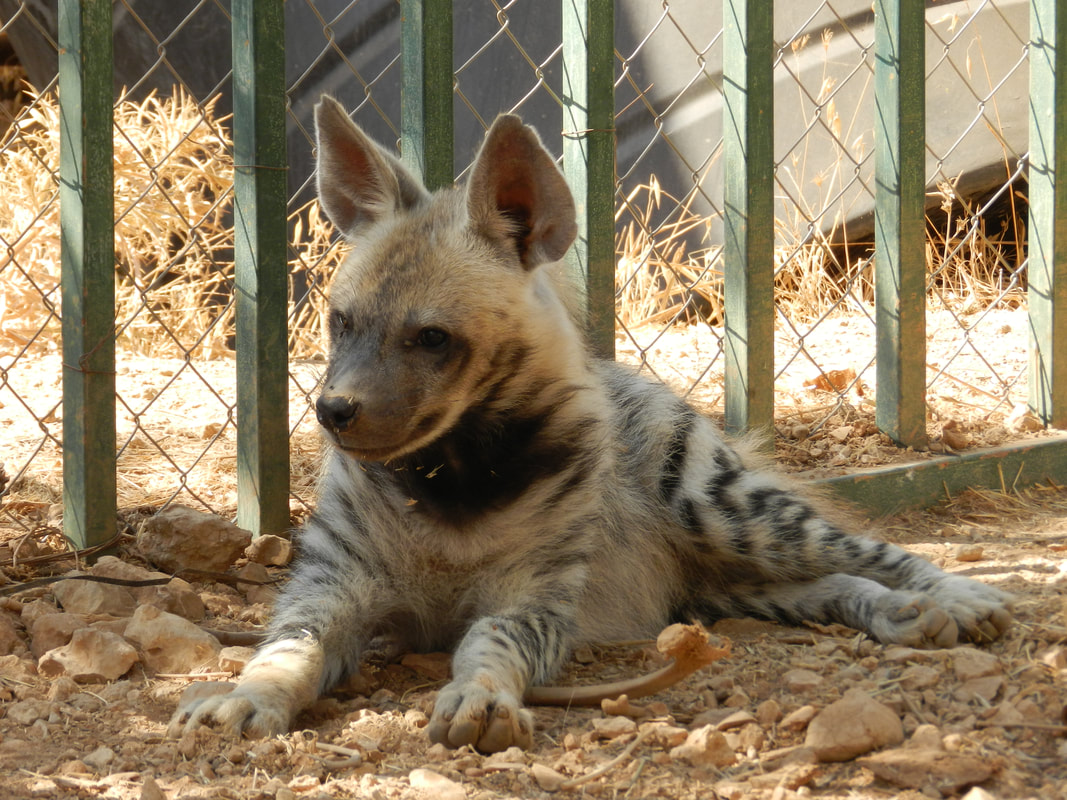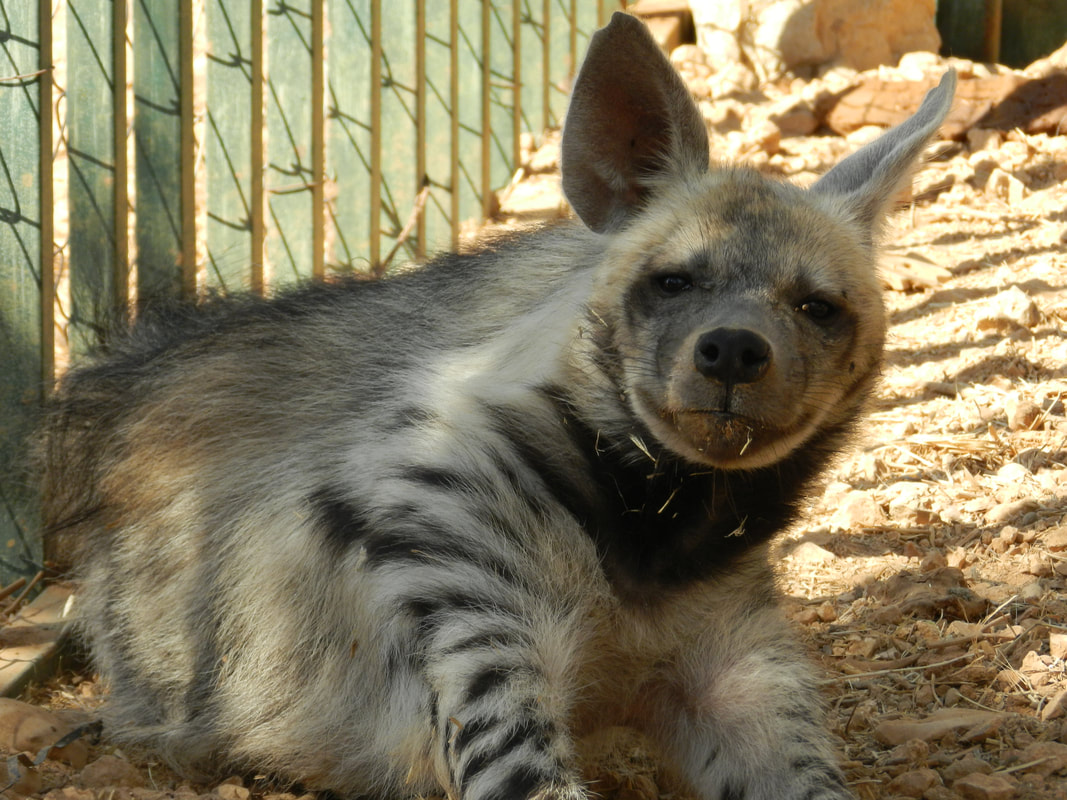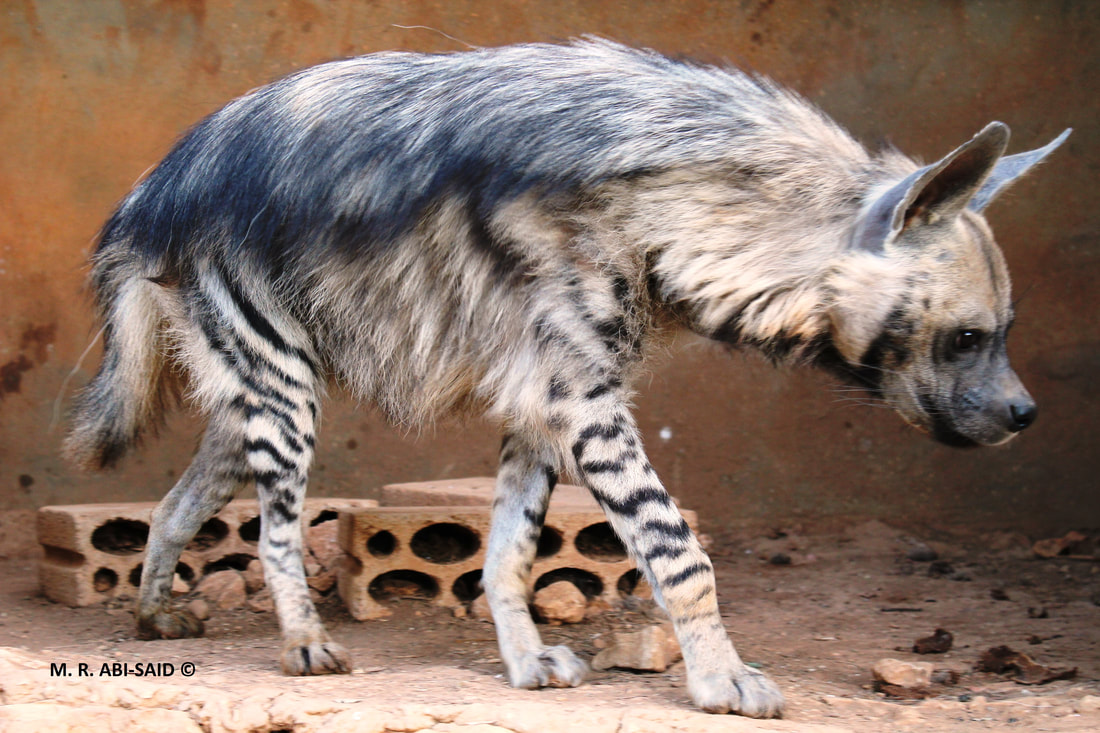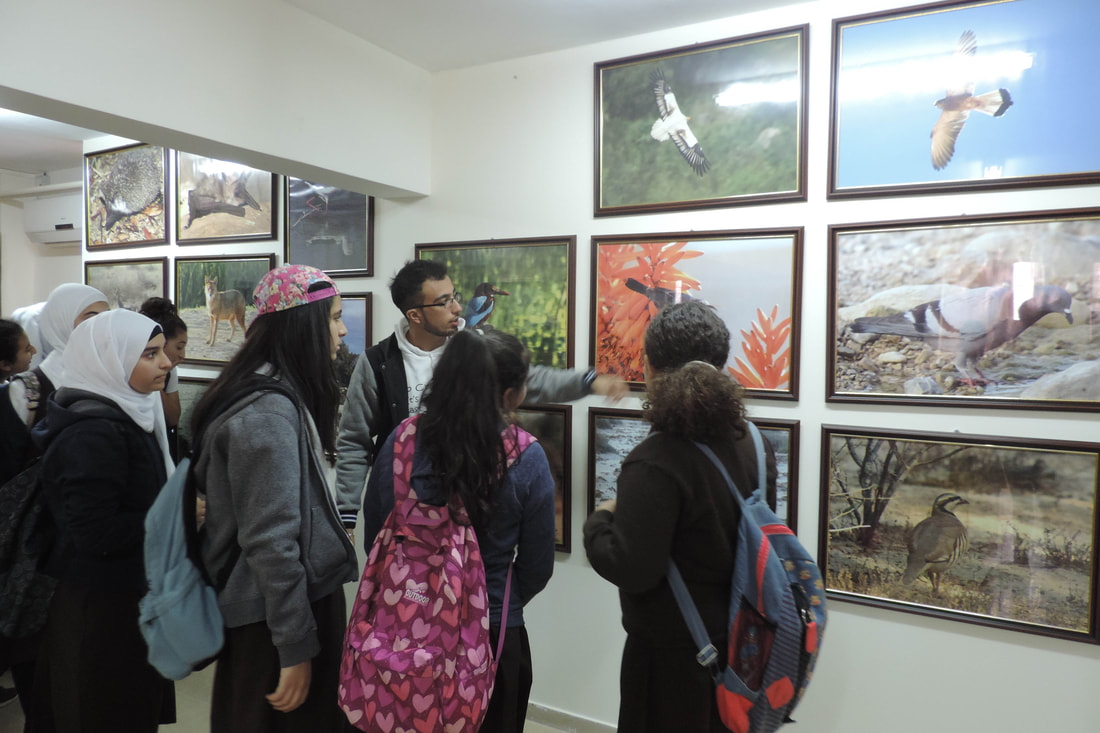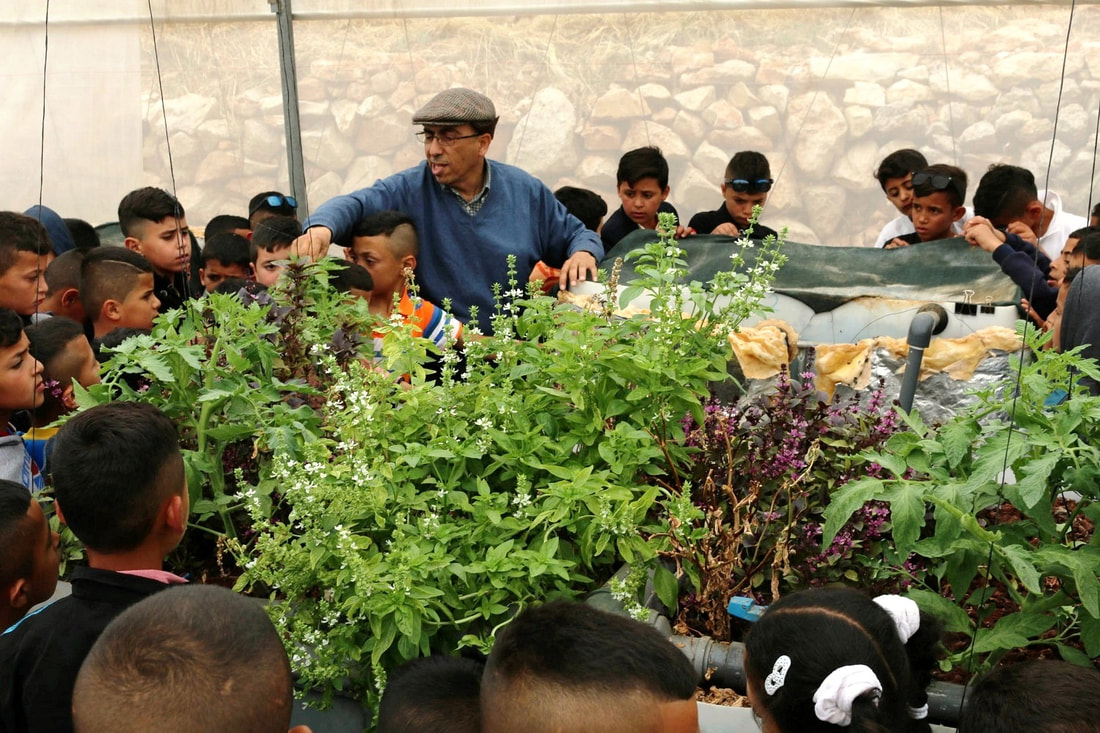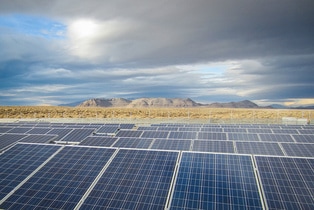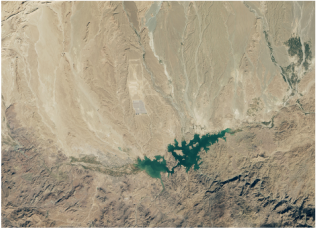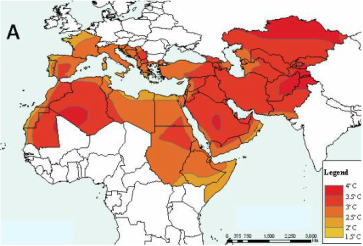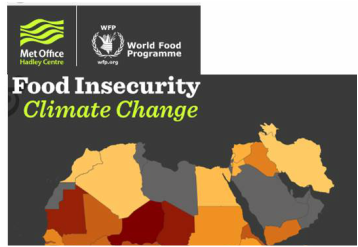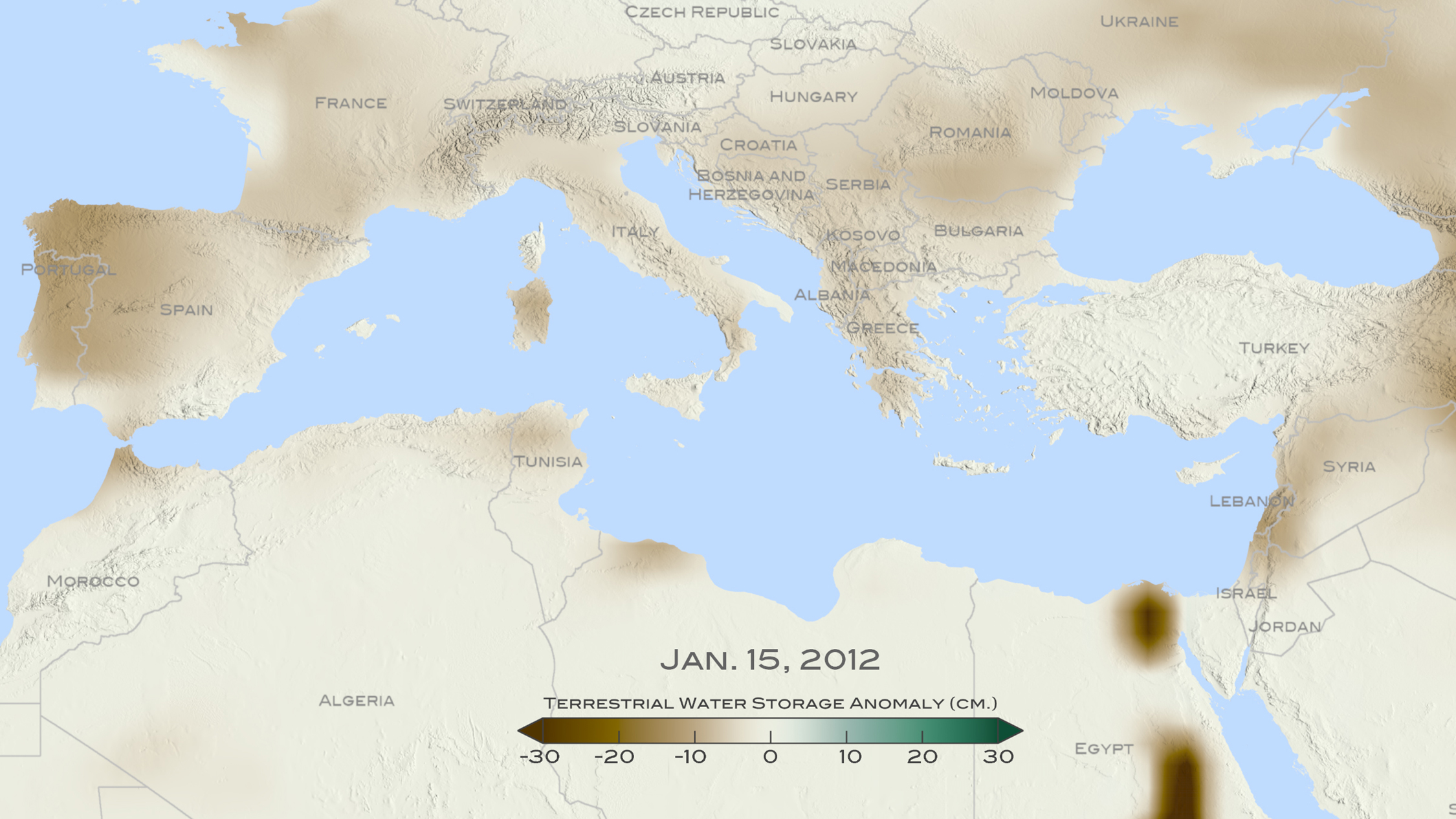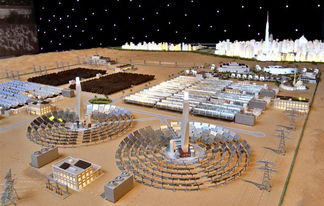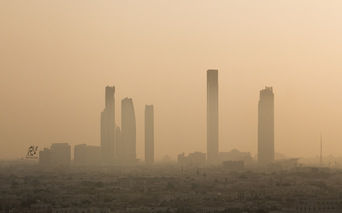SUSTAINABILITY
Saving Endangered Hyenas in Palestine
|
By Doris Norrito
In February, 2020, a Striped Hyena was released after ten months of nursing care by staff and volunteers at the Palestine Museum of Natural History; a huge victory in a small world. Research conducted over time in occupied Palestine placed awareness of the Striped Hyena (Hyaena hyaena syriaca) as being among animals threatened globally according to the International Union for Conservation of Nature’s Red List of Threatened Species (IUCN https://www.iucnredlist.org/species/ 10274/45195080) as well as being endangered locally. It is widely distributed across Asia, Africa and the Middle East indicating transitional stages among known subspecies. The Striped Hyena is the only hyena of four global species found within the Palestinian territories. Lingering folk tales and false information are used to justify rampant hyena slaughter, and habitat destruction have led to the identification of the Striped Hyena as an endangered species. In addition, Israeli occupation denies Palestinian officials and scientists access to 60% of the West Bank thereby restricting optimal scientific study. Since 2018, the field team of the Palestine Museum of Natural History / Palestine Institute for Biodiversity and Sustainability (PMNH/PIBS) has been conducting research to build on existing scientific data. The last overview in the West Bank was about 25 years ago; (Qumsiyeh, 1996; Mendelssohn and Yom-Tov, 1999) population hyena decline and recent studies indicate need for further study. According to museum researcher Mazin Qumsiyeh, increased interest through social media and recently developed equipment encourages research. New camera traps (Simmons Whitetail Trail Camera; Night Vision Camera) have been placed near water resources in Al Makhrour added new information. Additional support by environmental law enforcement and the new Environmental Quality Authority (EQA) increased recent collected data by expanding existing museum policy. Animals are routinely brought in for rehabilitation and release. Extended rules now allow hyena roadkill and animals confiscated from illegal hunters to be brought to the museum for examination. The dead hyenas that were received included one pregnant female dragged behind a car and confiscated by the authorities. After taxidermy, an animal is displayed in the Museum exhibit room. Posters inform visitors with reliable scientific facts and a research guide to answer questions. In April 2020, an early morning field trip was organized to collect new data. Members of the EQA were invited to participate. The purpose of the tour was to explore hyena habitats near Herodion, Teque and in the fig Valley in Beit Ta’amar Village, and to observe wildlife in general. The experienced Qumsiyeh gave visitors on site knowledge of scientific discovery. While searching for evidence of hyena existence and observing other wildlife inhabitants, visitors saw a field snake, European birds and an array of subtle natural wildlife traces missed by casual observance but crucial to scientific field research. This participation brought further understanding to policy makers who are charged with making decisions that impact wildlife. An all-inclusive meeting followed the tour and recommendations were jointly made:
A future of hope? The future of the hyena is viewed with cautious optimism. Education and awareness campaigns, stricter EQA law enforcement and new police oversight all point to a positive direction for saving hyenas from extinction in Palestinian Authority Areas. Publicity and social media also show significant interest. The museum Facebook story about the care and release of the Striped Hyena followed one of a release of an eagle owl. Most comments come from young people, Qumsiyeh says. People unable to come to the museum (or kept from visiting due to COVID-19 pandemic) can see posts on Facebook : Facebook:https://www.facebook.com/Palestine-Museum-of-Natural-History. Refs -Mendelssohn, H. & Yom-Tov, Y., 1999. Fauna Palestina: Mammals of Israel. Keterpress Enterprises, Jerusalem. -Qumsiyeh, M. B. 1996. Mammals of the Holy Land. – Texas Technical University Press, Lubbock, 389 pp. -Handal, Elias N., George H. Qumsieh, Shayma Y. Hammash, Mazin B. Qumsiyeh. Status and Conservation of the Striped Hyena (Hyaena hyaena) in the Occupied Palestinian territories (West Bank) . Jordan Journal of Natural History, 2020 (in press). Palestine Museum of Natural History
Teaching for the Future
Doris Norrito The primary mission of the Palestine Museum of Natural History (PMNH) and its companion, the Institute of Biodiversity Research (PIBR) is to promote research and educate people. The importance of conserving and protecting our natural world places strong emphasis on the teaching of elementary and high school students at the Museum. Most important is to train the young people to pass on their acquired knowledge so as to promote responsible behavior between people and the environment. To that end, students coming to the Museum play a critical role. Expanding Museum research in the “a scarcer-research” area includes reform of the entire education system to put emphasis on conservation as the highest priority. The learning by doing became a valuable learning experience for the benefit of the environment and biodiversity in Palestine; one that can ultimately impact the rest of the world. From its beginning in 2014, progress at the Palestine Museum of Natural History exceeded expectations. The three acres of trees, plants and animals surround the Museum add botanical gardens and permaculture conditions for a self sustaining ecosystem and also provide an outdoor educational tool for school children. For children, many of whom have daily lives confined to windowless walls and narrow alleys in crowded refugee camps, the museum room exhibits and classroom lessons make modest impressions compared to the outside grounds where wide-eyed unbridled energy rules and each step opens surprise and wonder. Crowding for a view of a small turtle, some children reach greedily to grab it, others fear-eyed and arms hug-folded back away. Learning for them requires patience. Teaching environmentally deprived children to care and protect home settings takes small steps. The museum grounds and botanical gardens are laboratories able to meet the challenges. Picking up trash and potting plants accompany games and team contests created to inspire picking up thoughtlessly tossed bottles and paper, aiming it at containers instead of throwing it on the ground. Caring for a plant, watching seeds grow; pride reward comes in passing what was learned at the Museum at home and engaging families and friends. Classroom lessons with graphics coordinate hands on experience with the outside. Conservation methods applied in interacting with nature are discussed and reviewed in class. Most important, students take what they learn home to teach about preserving their patch of the natural world and the planet. Encouraged to return regularly to the Museum for follow up lessons and to report community progress and problems lends pride and empowerment. Results are slow measured by patience; and seen fleetingly in youngsters with pride in learning. Our Goals are:
|
|
Solar Atlas
|
One Quarter of 1 % of Turkey’s Surface Area Is Sufficient to Meet All the Power Demand with PV by 2050!
A new paper focuses on a single aspect of the renewable energy impact debate: the land use of photovoltaic electricity. Authors use a science-based argument and conclude that it would take an area of 763 km2, to provide all of the current electricity consumption of Turkey by PV. For 2050, the required area would be 1600 km2, less than a quarter of 1 % of Turkey’s total surface area. Denruyter JP., Berke M.Ö. (2017) Solar Atlas: One Quarter of 1 % of Turkey’s Surface Area Is Sufficient to Meet All the Power Demand with PV by 2050!. In: Uyar T. (eds) Towards 100% Renewable Energy. Springer Proceedings in Energy. Springer, Cham |
Robotics Education in Africa: Africa Compete
|
'The world is approaching a third industrial revolution. This is forcefully reflected in the phenomenal advancement in the robotics field. In order for Africa to compete in this new era, a change in education policies must take place in the African educational system. In this chapter, African initiatives in science, technology, and innovation are presented as initial core projects. International initiatives as well Egypt's experiences in the robotics field are presented for benchmarking for interested African countries. The focus of the chapter is how to build a knowledge-based society supporting educational ecosystem. '
Author(s): Marwa Soudi (Ideas Gym Science Center, Egypt) Copyright: 2014. Pages: 16 Source title: Impacts of the Knowledge Society on Economic and Social Growth in Africa Source Author(s)/Editor(s): Lloyd G. Adu Amoah (Ashesi University, Ghana & Strategy3, Ghana) DOI: 10.4018/978-1-4666-5844-8.ch012 |
Resources-Solar
Mega structures to harvest solar power
At the edge of the Sahara desert in Morocco under the scorching sun lies an important megastructure harnessing an abundant source of energy. One of the largest solar projects in the world is being built in phases with a potential to provide electricity to more than one million people.
|
Food Security
Genetic research to mitigate climate change threats to food security
Climate models predict reduced precipitation, increased drought occurrence, and rising temperatures in the MENA region. This is projected to negatively impact agriculture and food security in some countries. Plant genetic research underpins crop production and safeguards against the impacts of changes in weather due to climate change.
|
Climate Food Security Index
Find out how climate action could shape future vulnerability to food insecurity in your country by using a new interactive website produced by the Met Office UK / World Food programme. It allows readers to explore how different scenarios of global greenhouse gas emissions and adaptation to climate change could change the geography of food insecurity in developing and least-developed countries.
|
Resources- Water
Eastern Mediterranean drought worst of past 900 years
A new study finds that the recent drought that began in 1998 in the eastern Mediterranean Levant region, which comprises Cyprus, Israel, Jordan, Lebanon, Palestine, Syria, and Turkey, is likely the worst drought of the past nine centuries.
Water Resources Vulnerability Assessment of MENA Countries
Water Resources Vulnerability Assessment of MENA Countries Considering Energy and Virtual Water Interactions.
|
EnergyA wealth of over a third of global oil reserves and natural gas is not enough to meet local and world demands for future energy needs. Many countries are investing in alternative, novel and renewable sources.
Al Shidi, et al. (2016) Shifting to Renewable Energy to Mitigate Carbon Emissions: Initiatives by the States of Gulf Cooperation Council. Low Carbon Economy , 7, 123-136. http://dx.doi.org/10.4236/lce.2016.73012 Khondaker et al. 2016. Greenhouse gas emissions from energy sector in the United Arab Emirates – An overview. in Renewable and Sustainable Energy Reviews 59:1317-1325 · June 2016 DOI: 10.1016/ j.rser. 2016.01.027 |
Climate
Latest on COP 22
UNFCC
'The United Nations Framework Convention on Climate Change (UNFCCC) entered into force in 1994, aimed at reducing greenhouse gas concentrations in the atmosphere. The Conference of the Parties (COP) was designated as the supreme governing body of the Convention.' MENA Climate
The MENA climate is characterised by arid and semi-arid zones and humans have used multiple adaption strategies to build civilisations and communities. Climate change is forcing major rethink of science, technology, innovation and sustainable development approaches to manage change and prepare for the future.
|
|
